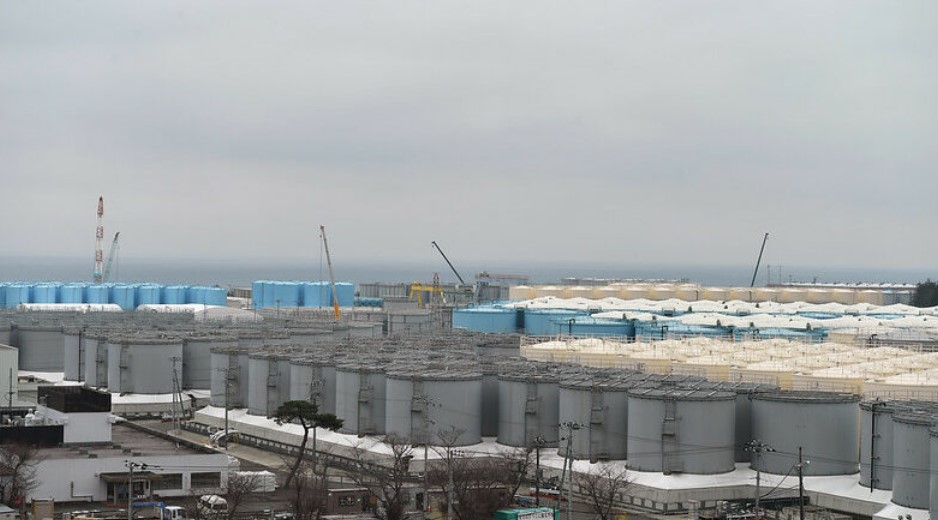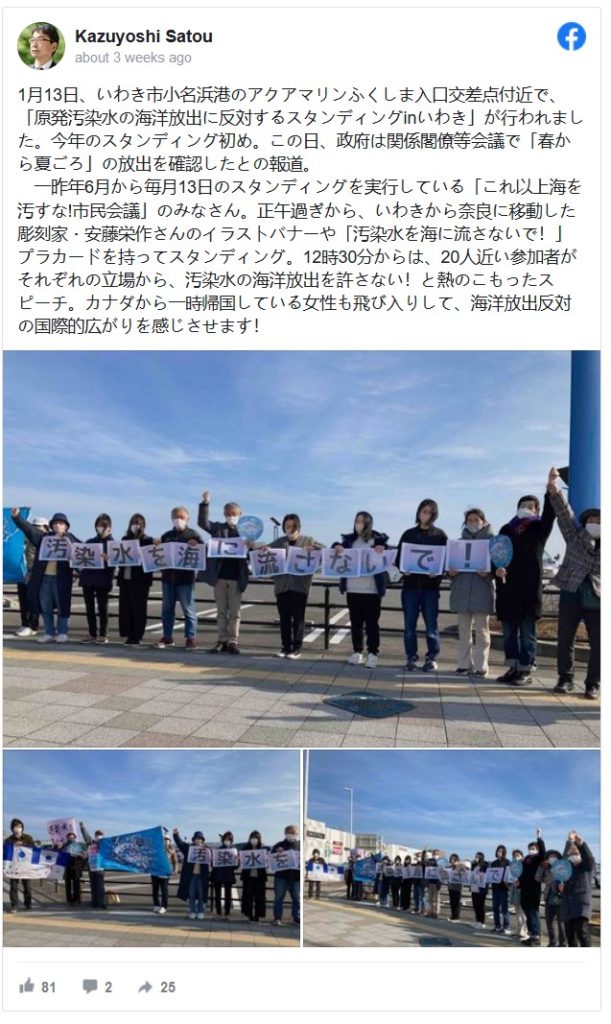Amid Fears of Contamination, Japan Will Soon Dump Treated Water from Fukushima Nuclear Plant into the Pacific
 By Mong Palatino and Nevin Thompson
By Mong Palatino and Nevin Thompson
Pacific island nations, neighboring countries in Asia, scientists, and others criticized an international organization’s endorsement of plans to dump tens of thousands of tons of contaminated wastewater from the Fukushima Daiichi nuclear power plant into the ocean. The plan to schedule the discharge of approximately 1.3 million tons of water on an ongoing basis for the next three decades has alarmed the Pacific community because of possible adverse impacts on nearby marine ecosystems and their way of life.
Following a January 2023 visit to the Fukushima nuclear facility to receive updates on plans to dispose of the contaminated water, Gustavo Caruso, a Director within the International Atomic Energy Agency (IAEA) Department of Nuclear Safety and Security and Chair of the Task Force, voiced support for the plans. As an international association, the IAEA says it promotes the “safe, secure and peaceful use of nuclear energy,” which includes the disposal of nuclear waste.
“[Japan’s Nuclear Regulation Authority] prepared thorough evidence of how they are aligning the regulatory plans related to […] treated water discharge with the IAEA safety standards,” said Caruso in a statement following the visit. According to the IAEA statement, “Before any water discharge begins – scheduled for this year – the IAEA will issue a comprehensive report containing the collected findings and conclusions of the Task Force across all aspects of the review conducted as of that time.”
In March 2011, an earthquake and tsunami resulted in a nuclear disaster in Fukushima Daiichi nuclear power plant. After power was disrupted and emergency generators failed, three nuclear reactors onsite lost cooling capabilities and experienced a core meltdown.
Water used to cool the reactors, along with groundwater below the complex, became contaminated with radioactive materials. This water has been collected, treated, and stored onsite since 2011 in dozens of massive storage tanks that now crowd the nuclear complex.
Since 2021, the Tokyo Electric Power Company (TEPCO) has been preparing the infrastructure for the “safe” release of Fukushima’s treated water through a process called the Advanced Liquid Processing System (ALPS). In August 2022, TEPCO announced the installation of facilities that will allow for water discharge after consulting with Japanese authorities and local residents. It vowed to cooperate with various stakeholders in explaining the systematic release of water and its scientific basis:
We will continue to do our utmost to increase the understanding of people of Fukushima and society at large regarding the handling of ALPS treated water as part of the decommissioning work, by focusing on our efforts to disseminate information based on scientific evidence to parties within and outside Japan in an easy-to-understand manner and taking every opportunity to listen to the concerns and opinions of the public and explain our approach and response.
But Henry Puna, the secretary general of the Pacific Islands Forum (PIF), reiterated the regional opposition to Japan’s plan of releasing Fukushima’s treated water into the Pacific Ocean:
Based on our experience with nuclear contamination, continuing with ocean discharge plans at this time is simply inconceivable and we do not have the luxury of time to sit around for four decades in order to ‘figure it out.’
The decision for any ocean release is not and should not only be a domestic matter for Japan, but a global and transnational issue that should give rise to the need to examine the issue in the context of obligations under international law.
I am asking today, what our Pacific people did not have the opportunity to ask decades ago when our region and our ocean was identified as a nuclear test field.
PIF enumerated alternative options such as “safe storage and radioactive decay, bioremediation, and use of treated water to make concrete for special applications.”
Forum Secretary General Henry Puna: “We have uncovered serious information gaps and grave concerns with the proposed ocean release. Simply put, more data is needed before any ocean release should be permitted.” pic.twitter.com/YPWcnrS7XQ
— Nic Maclellan (@MaclellanNic) January 4, 2023
During a conference held at New Zealand’s University of Otago in November 2022, participants described Japan’s plan as a manifestation of “nuclear colonial violence”:
TEPCO and the Japanese government’s plan to discharge radioactive wastewater into the Pacific shows direct disregard for the sovereignty and self-determination of Pacific peoples and the ocean their livelihoods depend upon.
We condemn attempts by the Japanese government and TEPCO to trivialise the nature and extent of the damages the radioactive wastewater discharge will cause to the people, ocean life, and places of the Pacific.
Speaking on behalf of Pacific civil society groups, Noelene Nabulivou of DIVA for Equality urged Japanese authorities to consider the perspectives of Pacific communities:
Japan’s internal process of approval for this construction needs to consult the Pacific, as it threatens the livelihood of Pacific peoples and the environment we depend heavily on. This is all happening in the context of massive loss and damage from the climate emergency, that is also not of our making.
The Chinese foreign ministry called Japan’s decision to go ahead with its controversial plan “irresponsible” and “self-serving. Meanwhile, the US National Association of Marine Laboratories cited the “lack of adequate and accurate scientific data supporting Japan’s assertion of safety.” Robert Richmond, a marine biologist at the University of Hawaii, Manoa, noted that “there is a strong consensus internationally that continued use of the ocean for dumping waste is simply not sustainable.”
Local opposition to the contaminated water discharge has been supported by Sato Kazuyoshi, a municipal councilor in Iwaki, a city neighboring the Fukushima nuclear complex. In a Facebook post, Sato said:

On January 13, near the entrance to Onahama Port, Iwaki City, we held a rally, ‘Iwaki Citizens Against the Release of Contaminated Water from Nuclear Power Plants into the Ocean.’ The beginning of this year’s standing. On earlier that day, there were reports that government ministers had confirmed the release (of contaminated water) ‘from spring to summer.’
Since June 2021, we have been holding a this rally on the 13th of every month: ‘Don’t pollute the sea any more!’
At noon, I stood with an illustration banner by Eisaku Ando, a sculptor who moved from Iwaki to Nara, and a placard saying ‘Don’t pour contaminated water into the sea!’ Nearly 20 participants from their respective standpoints said that they would not allow contaminated water to be released into the ocean! and impassioned speeches. A Japanese citizen who had returned from Canada for a visit also joined us, showing the international spread of opposition to the ocean release of contaminated water.
TEPCO is working closely with the International Atomic Energy Agency (IAEA), which has been releasing regular reports about the safety procedures being done at Fukushima. IAEA assured the public that it will release its comprehensive report before the actual discharge of treated water in about three months’ time.
Fukushima Nuclear Power Plant. Photo by Joe Moross. Source: Wikipedia, (CC BY 4.0)
Source: Global Voices




